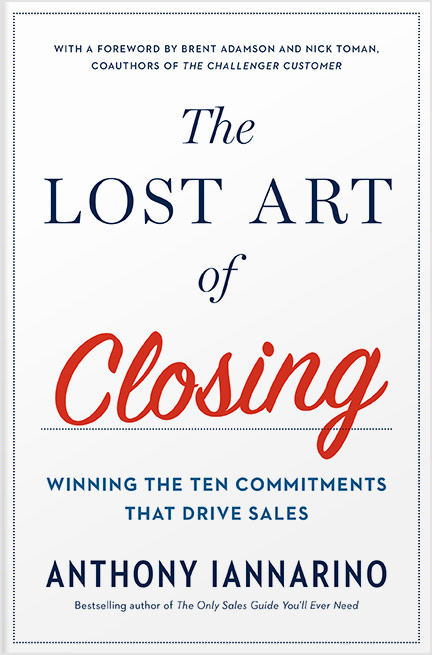The Gist:
- You have to trade value in excess of the time your prospective client provides you.
- In every stage of the sales conversation, you must create value for the contacts with whom you are engaged.
- The lens through which you view the sales conversation should clarify what type and level of value you need to create.
The “Trading Value Rule” demands that you trade value for the gift of your contacts’ time. Every meeting with decision-makers or other stakeholders who are part of the sales conversation is subject to this rule, from the promise you make to gain the first meeting to the contract signing when your prospect becomes a client. The greater the value you create during every interaction, the greater your chances of winning an opportunity.
Want to learn even more about my sales strategies and techniques? Join me in one of my upcoming virtual events!
Early Discovery
Your first meeting with a prospective client either establishes your ability to create value for your contacts or exposes you as a time-waster. Salespeople who treat a client who requires a consultative approach as if their decision is transactional will find themselves ushered out of the contact’s office rather quickly.
Creating value in the first meeting means leaving your client better off from having had the conversation, even if they never buy from you. You might create that value by sharing insights, e.g. an executive briefing, that sharpens the lens through which they view their business and their decisions. You might also provide value by answering (and asking) questions that help them understand the nature of their problem.
You create value when you help your contacts explore change. You don’t create a lot of value by talking about your company or your solution early in the process.
Late Discovery
In later discovery calls, you create value for your contacts by helping them understand what changes they might make to improve their results, what possible solutions they should consider, and the different models different companies use to produce better results—so you can differentiate yourself and your solution. You also use the client’s time well when you help them identify the contacts that are necessary to the process of change, guiding them towards consensus and helping them manage the process of buying.
Your contacts are better off for having given you their time when they are better informed about the decisions they are going to make, and when they better understand their options and their implications for their future results. They’re also better off by including others in their company who are going to be impacted by a decision to change, as part of discovery.
You rarely create any real value by rushing through a conversation where the only thing the contact learns is what you would like to sell them.

Dialing in a Solution
Investing time to help your client find a solution that is right for their company often means adjusting the solution so that the stakeholders can support the decision to move forward. This is a subtle form of value creation, but it can be powerful: by the end, the client is not simply buying your premade solution but taking ownership of a customized and targeted solution.
Rushing to the solution and presenting it without sharing exactly how it will work for your contacts generally creates too little value, at least outside of transactional sales. More to the point, any attempt to speed through a conversation that needs to progress at the client’s pace destroys value in that interaction and is likely to erase the value you have created up to that point.
Presenting and Proposing
You might think that this stage is a formality when it comes to creating value for your clients. But the trading value rule is always and forever in effect for client relationships. You create value here by recounting the challenges your prospective client was experiencing when you found them, the future state they desire, and the way your solution and your help will improve their results, proving that you understand your client’s needs better than anyone else.
The more transactional your approach is to a consultative decision, the less evidence it gives that you care about your contacts and their outcomes, since value creation is an inherently other-oriented endeavor.

Creating Value in the Negotiation
It’s natural to want to protect your pricing in a negotiation. But as a consultative salesperson, your main responsibility is not to your pricing itself but to protecting your client’s outcomes. Therefore, you create value during negotiation by preventing your client from removing the necessary investment they need to produce the results they are pursuing. By protecting their investment, you help ensure that they achieve the outcomes they need.
You have no doubt lost a deal to a competitor who offered too low a price to provide the results the client expected—and once your contact realized the true cost of that low price, I hope they admitted their mistake and told you that they should have gone with you in the first place! Don’t be that source of regret for your clients: protecting their future results now is a massive source of value creation.
The Real Value Your Create
After all that work creating all that value, a signed contract allows you to create the value of better results. It allows you to put the client’s solution in place and start generating the results your client needs. The value you created up to the point of the commitment to decide fueled the entire sales conversation. Never let that conversation run on empty—especially in a context in which your competitor can create more value and eat your lunch.
In each and every interaction, view the sales conversation through the lens of value creation. The ability to promise value in every interaction, then deliver it without fail, is the surest path to winning new deals, especially deals with your dream clients.
Do Good Work:
- What do you need to do in early meetings to create massive value for your contacts?
- What value can you create that will improve the buying process for your prospective clients?
- How do you earn the right to move forward through the value you create in every conversation?

Essential Reading!
Get my 2nd book: The Lost Art of Closing
"In The Lost Art of Closing, Anthony proves that the final commitment can actually be one of the easiest parts of the sales process—if you’ve set it up properly with other commitments that have to happen long before the close. The key is to lead customers through a series of necessary steps designed to prevent a purchase stall."
Buy Now







.jpg?width=768&height=994&name=salescall-planner-ebook-v3-1-cover%20(1).jpg)


